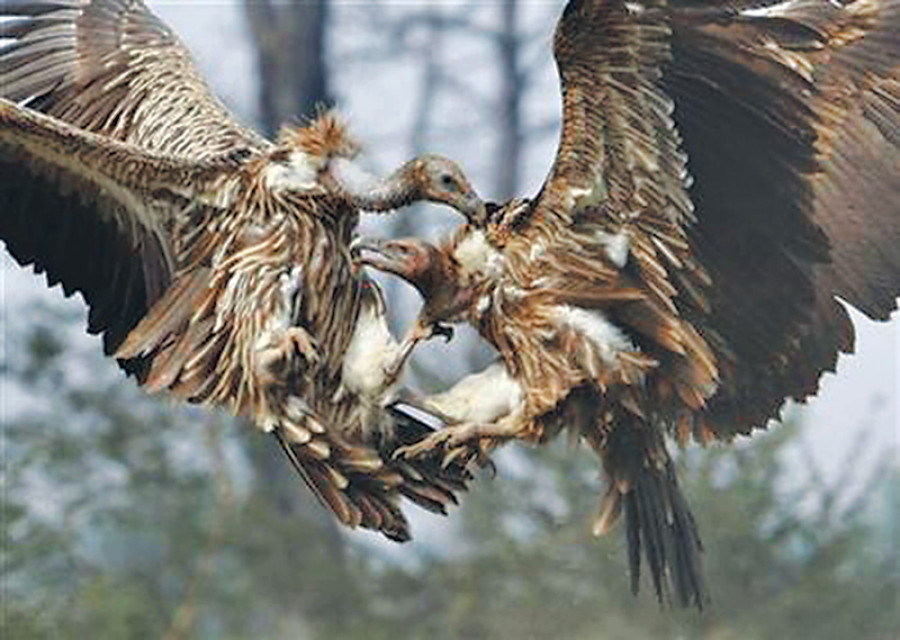National
Vulture population under threat
Vultures, known as the nature’s scavengers, are facing threat, thanks to dwindling nesting habitats and a host of other factors.
Rastriya Samachar Samiti
Vultures, known as the nature’s scavengers, are facing threat, thanks to dwindling nesting habitats and a host of other factors.
Climate change, shrinking habitation, increased use of animal drugs and lack of preys are some of the reasons making vultures struggle.
The absence of tall trees has also deprived them of a place to build nests, says Chakra Prasad Sharma, of the Baitadi chapter of Community Forest Consumer Federation. “Villagers are felling trees citing less production in the irrigated fields which, resulting in loss of place to build nests for vultures,” he said.
Bird Conservation Nepal had recorded 12 nests in Baitadi last year. Sharma argued that governmental and local level effort could help conserve the endangered species. Widespread use of diclofenac, a veterinary drug, has largely contributed to decline in vulture population. Though the drug was banned in 2006, there is a lack of monitoring; hence its use is still rampant. The drug is used for treating inflammation in cattle, but it causes kidney failure and death in vultures which feed on their carcasses.
A total of 23 species of vultures are found across the world. Nepal is home to eight vulture species including Himalayan vulture, Egyptian vulture, white-rumped vulture, slender-billed vulture, red-headed vulture, cinereous vulture, griffon vulture and bearded vulture.
About two decades ago, there were about 50,000 nesting pairs of white-rumped and slender-billed vultures. Barely 500 pairs of them remain today.




 7.12°C Kathmandu
7.12°C Kathmandu















